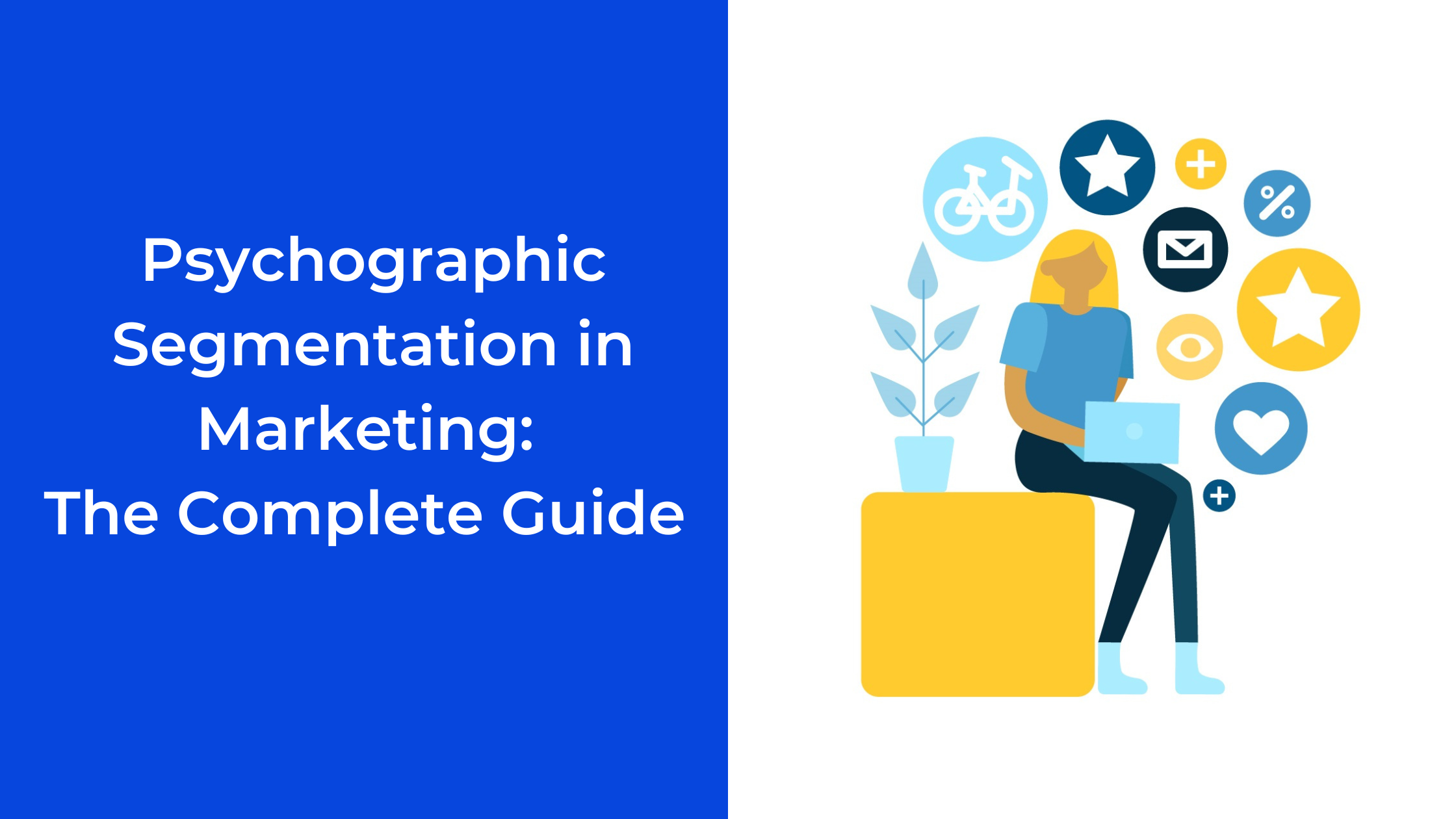The Top 24 E-commerce KPIs Every Business Needs to Know
For an online store to succeed in today’s fast-paced data-driven world, they need key performance indicators or KPIs. These e-commerce KPIs or benchmarks help brands in various ways.
From managing their online stores to creating marketing strategies to understanding data to setting operational targets, marketing and operations managers as well as small-and-medium business owners can use e-commerce KPIs to drive their business forward and grow.
While this sounds exciting and informative, online businesses often struggle with KPIs because there are many such indicators, benchmarks, and metrics. This, in turn, makes it hard for online stores to decide on what-to-measure and what-not-to-measure.
In addition, many businesses and marketers look at KPIs and data out of context, making this data less beneficial for the business and the goals become harder to achieve.
Focusing on the best KPIs for measuring the performance of an e-commerce business becomes a problem more than a solution and opportunity.
In this article, we’re going to zoom in on e-commerce KPIs and which are the most important for online stores.
What are e-commerce KPIs?
As their name suggests, key performance indicators (KPIs) are critical (or ‘key’) indicators that indicate the progress of something towards an end result.
For example, if your target is to double your online sales in 2021, then you should put KPIs in place to measure this performance.
In this case, you’ll be using a number of e-commerce performance metrics to determine whether or not you’ve achieved this target by the end of the year and how you’ve done so.
Related read: What You Need to Know About the Difference Between ROI and ROAS
Having KPIs allows businesses to “focus for strategic and operational improvement, create an analytical basis for decision-making, and help focus attention on what matters most,” explains KPI.org.
Companies that use KPIs to measure their long-term performance are able to “determine [their] strategic, financial, and operational achievements, especially compared to those of other businesses within the same sector.” (Investopedia)
Generally, using KPIs involves setting a target or several targets and then tracking a business’s performance against that target. The situation is the same for e-commerce KPIs, which focus on online businesses.
Similarly, Shopify describes KPIs as “milestones on the road to online retail success. Monitoring them will help e-commerce entrepreneurs identify progress toward sales, marketing, and customer service goals.”
“Managing with KPIs often means working to improve leading indicators that will later drive lagging benefits. Leading indicators are precursors of future success; lagging indicators show how successful the organization was at achieving results in the past.” (KPI.org)
KPIs vs metrics
Many confuse metrics and KPIs, while others use them interchangeably. The truth is, they’re closely related. But there is a major difference.
KPIs are considered important measures that help businesses see how they are moving forward and what they need to improve. They allow you define and see the impact of your strategy.
On the other hand, metrics are measures that add value to your company but are more general or generic. Think of metrics as ‘business as usual’ measures rather super important measures.
“Every KPI is a metric, but not every metric is a KPI.” (On Strategy HQ)
Klipfolio’s Jonathan Taylor notes that there are many metrics out there, noting that they are indicators that can measure things like clicks, subscription revenues, or percentages of new sales.

He adds that not all metrics are KPIs. “KPIs are the most important metrics you have – the ones that really underscore what your key business goals are,” says Taylor.
Types of KPIs
When looking at performance benchmarks, there are 5 main types or measurements that are used to achieve a business’s objectives.
These types are:
- Input KPIs: These KPIs measure certain attributes such as amount, quality, or type of resources used that produce an output or result.
- Output KPIs: These indicators show how much work was done and the results or what was produced from that work.
- Process KPIs: Also known as activity measures, this type of KPI shows how quality, consistency or a certain efficient process was used to create a result or output. It can also “measure controls on that process, such as the tools/equipment used or process training,” notes KPI.org.
- Outcomes or outcome KPIs: These involve accomplishments (or impacts) that are considered to be of an intermediate level. They may involve customer brand awareness (that’s coming from brand communications or marketing efforts) or end results or outcomes, which include sales or customer retention.
- Project KPIs: These indicators answer questions about the deliverables of a project, their status, and any milestones or progress achieved for certain projects or initiatives.
Why KPIs are important in e-commerce
Having e-commerce KPI benchmarks allow businesses to make important decisions and measure the effect of their efforts over a period of time.
Without KPIs, online stores would be forced to make sudden decisions based on gut feelings and personal ideas and preferences.
While some decisions may offer good results, decisions based on intuition cannot support or drive a business. There are many ways this process can go wrong.
Not to mention, when something goes wrong, there’s no way to know what it is exactly. You have no KPIs to show your e-commerce performance or what’s lagging.
On the other hand, businesses using KPIs are able to get a clear view of their performance and take decisions based on that information and data.
“What gets measured, gets improved.” – Peter Drucker
However, it’s important to remember that KPIs can’t stand alone. They aren’t valuable on their own.
You can’t simply use any e-commerce KPIs and hope for the best.
“The true power of KPIs lies in your ability to interpret the data and draw out actionable insights which can help you improve your business,” explains Oberlo.
Understanding which KPIs are best for measuring the performance of your e-commerce business can mean long-term success for you and your business through well-thought-of decisions.
E-commerce KPIs for sales and marketing
For your online store, there are almost countless metrics and benchmarks that can help you.
These KPIs can include online store visits and traffic, or data from marketing efforts such as number of clicks, views, bounce rate, conversions, among other data.
Additional read: 45+ E-commerce Vocabulary, Metrics and Business Terms You Need to Know
But which of these e-commerce KPIs should you as an online store owner or marketing manager focus on to grow your business and revenues?
1. Sales
A little obvious but one of the top e-commerce KPIs you need to measure is your sales.
As an online business, you can monitor your sales hourly, daily, weekly, monthly, quarterly, or annually. You can also compare your sales on a week-on-week, or month-on-month, quarter-on-quarter, and/or year-on-year basis.

You can even compare your sales across several years’ Black Friday’s or Christmas week 2019, 2020, and 2021 and so on.
Sales should be a major KPI on your list.
2. Online visits and unique visitors
To drive traffic, e-commerce businesses create ads to attract potential and current customers.
But to understand and measure what this traffic means, the store needs to look at two aspects: the visits and the unique visits.
Both visits and unique visits are an analytical performance indicator for online marketing efforts.
Visits show the number of people who have – somehow – arrived at your online store. On the other hand, unique visits show the number of new visitors.
And because a customer can visit the same page several times, the number of visits is almost always larger than the number of unique visitors or users.
3. Page views, bounce rate, time-spent-on-site
These 3 metrics are considered engagement KPIs.
“Engagement KPIs indicate the intensity with which users use the content of a page and whether the page is perceived as sufficiently attractive to select products for the shopping cart,” explains KPI.org.
They indicate how many times a page was viewed, and how long a customer spent time on your site. The bounce rate shows the average number of people who have arrived at your online store and left.
Unlike most KPIs, the lower the bounce rate on your website, the better. It’s also best if you keep your bounce rate below 70%.
Customers can leave a website for a variety of reasons, including but not limited to technical issues, not finding what they are looking, bad user experience, not feeling safe adding their credit card information, and low-quality content.
4. Add-to-cart data
This e-commerce KPI shows marketers and store owners how many times a customer has added a product to their shopping cart.
5. Average order value (AOV)
AOV is one of the important KPIs for measuring the performance of an e-commerce business. Why? Because it measures the average amount spent by a customer every time they come to your store.
If Sarah comes to your store once a week, you want to know how much she spends on average. If she spends $50 per purchase, then Sarah’s AOV is $50.
6. Average basket size
Another important and related e-commerce KPI is the average basket size, which indicates the average number of items your store sells per purchase.
It’s worth mentioning that AOV is a performance metric for money, whereas average basket size is about items sold.
7. Number of transactions
This KPI is often measured along with AOV or the number of visitors to your website.
8. Conversions and the Conversion Rate
Two more critical KPIs for your e-commerce store are conversions and subsequently the conversion rate.
Conversions are those people who click your ad and complete the purchase or action required.
To measure conversions, you’ll need to measure the conversion rate, which is the percentage of people who have moved from merely interested to taking action. This action can be a sale or filling a form or getting in touch with your business.
9. Checkout cancellations
Some customers add products to their cart and continue all the way to checkout but then don’t complete the purchase. The reason can vary from technical glitches to abandoning their purchase last minute, to simply going back on the decision to buy.
This e-commerce benchmark indicates the percentage of uncompleted and cancelled purchases.
Running an online store can be tough, here are 31+ e-commerce quotes from experts to help you stay motivated
10. Cart abandonment rate
Cart abandonment is a constant pain for e-commerce businesses. It’s when customers add products to their cart but instead of buying them they disappear or leave the website.
For online stores, cart abandonment is a serious problem because it means that after they’ve spent money on attracting or acquiring the customer or retargeting them through ads, these customers don’t complete the purchase.
Which means, all your money just went down the drain.

The average cart abandonment rate for e-commerce business stands at a whopping 70%, according to the Baymard Institute.
A BI Intelligence report found that online stores see nearly $4 trillion worth of products abandoned in carts a year. However, around 63% of that figure can be recovered by online retailers.
There are many reasons why customers abandon their online shopping carts such as problems with payment, high shipping costs, and simply wanting to compare product prices.
11. Customer acquisition cost
Another important e-commerce KPI is the customer acquisition cost (CAC), which measures how much money your business has spent to acquire a new customer.
Acquiring customers is essential when launching an online store. Businesses just starting out have to put a lot of money into customer acquisition.
As a business, you have to be aware of the cost of your acquisitions along with other customer acquisition metrics.
If you sell a product that’s worth $10 and spend $20 on each newly-acquired customer, you’ll be on your way to bankruptcy and closing your store very soon.
That’s why calculating the average customer acquisition cost is very important for businesses.
12. Customer lifetime value
Customer lifetime value (CLV or LTV) is a KPI that measures the value of a customer’s relationship with a business over a period of time.
CLV and CAC are two e-commerce KPIs that are often measured together or in connection with each other.
13. New customer orders vs repeat customer orders
This e-commerce metric allows you to compare between the number of new customers and the number of repeat or returning customers.
Many online businesses focus on customer acquisition. However, data shows that returning customers are 5 to 25 times more likely to buy from you than a new customer.
Repeat customer orders are those orders coming from loyal and retained customers.
They are customers who like your store and products and who prefer to buy from you.
Customer retention offers various opportunities to cut costs, build loyalty, and increase AOV.
14. Return on ad spend (ROAS)
An important marketing metric is the ROAS, which measures the value you get from your ads.
Imagine spending $1,000 in ads but only getting $100 in sales. This means your ROAS is terrible. It also means you need to review and improve your ads, settings, customer segmentation, and copy to see where the problem is and improve your ad and ROAS.
15. Gross profit margin
The gross profit margin is a metric businesses and analysts use to determine a company’s or store’s financial health.
Often expressed as a percentage of sales, the gross profit margin involves calculating how much money is left from the sale of products after deducting the cost of goods sold.
The money left after deducting selling, administrative, and general expenses is the net profit margin.
You can calculate the gross profit margin by “subtracting the cost of goods sold (COGS) from the net sales (gross revenues minus returns, allowances, and discounts). This figure is then divided by net sales, to calculate the gross profit margin in percentage terms,” explains Investopedia.
16. Cost of goods sold (COGS)
The COGS metric indicates how much you’re spending on selling your product.
This can include manufacturing costs, marketing costs, employee wages, and/or overhead costs.
17. Inventory levels
This e-commerce performance indicator shows you how many products are in your inventory. It’s particularly helpful to see which products are about to run out and which products aren’t selling.
If your online store sells fresh foods, knowing your inventory helps you see which goods customers are buying and which they aren’t interested in and therefore allows you to restock accordingly.

E-commerce KPIs for customer service
KPIs for e-commerce aren’t just focused on sales and marketing. Customer service plays a major role in your ability to respond to customer queries and retain customers.
Your customer service team can include social media moderators, an email support team, or a few members in a call center. Either way, your customer service team’s effectiveness and timeliness in responding to customers could benefit from KPIs.
Here are the top customer support KPIs you need to know:
18. Customer satisfaction score (CSAT)
How can you know if customers are satisfied with the service they’re getting?
The answer: Ask them.
You can do that through a survey or a simple e-mail with a rating among other ideas.
All you need to do to measure the CSAT KPI is ask your customers: “How satisfied were you with your experience with [store name]?”
19. Net Promoter Score (NPS)
The NPS KPI gives you insight into your customer’s loyalty by measuring how likely they are to recommend your store to someone else.
20. Hit rate
The hit rate compares your sales after customers contact your customer service team. This rate is measured per product.
To calculate the hit rate, you’ll need to take the total number of sales of a product and divide it by the number of customers who reached out to your customer support team about that product.
21. First response time
This metric offers insight into the average amount of time it takes your customer support team to respond to a customer’s question or query.
Tip: Make sure your first response time is low.
22. Average resolution time
This KPI measures the amount of time your customer service team takes to resolve an issue.
It begins from the moment your customer contacts customer support about their problem.
23. Active issues
This metric measures the number of active issues or problems reported by your customers. It shows you how many queries have not been resolved or are pending.
24. Customer service email/phone call/chat count
This metric measures the number of emails or online chats or phone calls your customer support team receives.
Choosing the best KPIs for your business
KPIs are great for any business, e-commerce or otherwise. BUT to get the best results from your KPIs, you need to determine which are more important and more relevant to you.
A good way would be to look at your competitors. However, if you’re a small business or you’re just starting out and your competitors are significantly larger then you definitely don’t need that comparison.
The best solution, however, comes from knowing what your goals are and understanding which areas of your business can be improved to achieve those goals.
For example, if your target is to acquire new customers and increase your sales, you’ll need to look at your average customer acquisition cost along with the number of new sales.best
Similarly, if you’re using paid ads to advertise your products, you should look at your ROAS and see if you’re getting good sales results from your ads.
Final words
As their name suggests, KPIs are important for businesses. But what’s also important is remembering that different businesses and industries will have different KPIs.
Even in e-commerce, depending on what you sell and where and how you sell it, you may need to consider different e-commerce KPIs than your competitor.
“KPIs should be chosen and monitored depending on your unique business goals,” stresses Shopify.
And they’re 100% right! Your business goals should determine which KPIs you’re going to use. In some cases, what’s relevant to you may not be relevant to your competitor and vice versa.
As a business owner or marketing manager, you’ll have to set KPIs for the different parts of your e-commerce business. This can include KPIs for your marketing, sales, and customer service teams. You can also have manufacturing KPIs.
The important thing is to know what your goals are and what are the best e-commerce KPIs you need to measure to achieve those goals.


